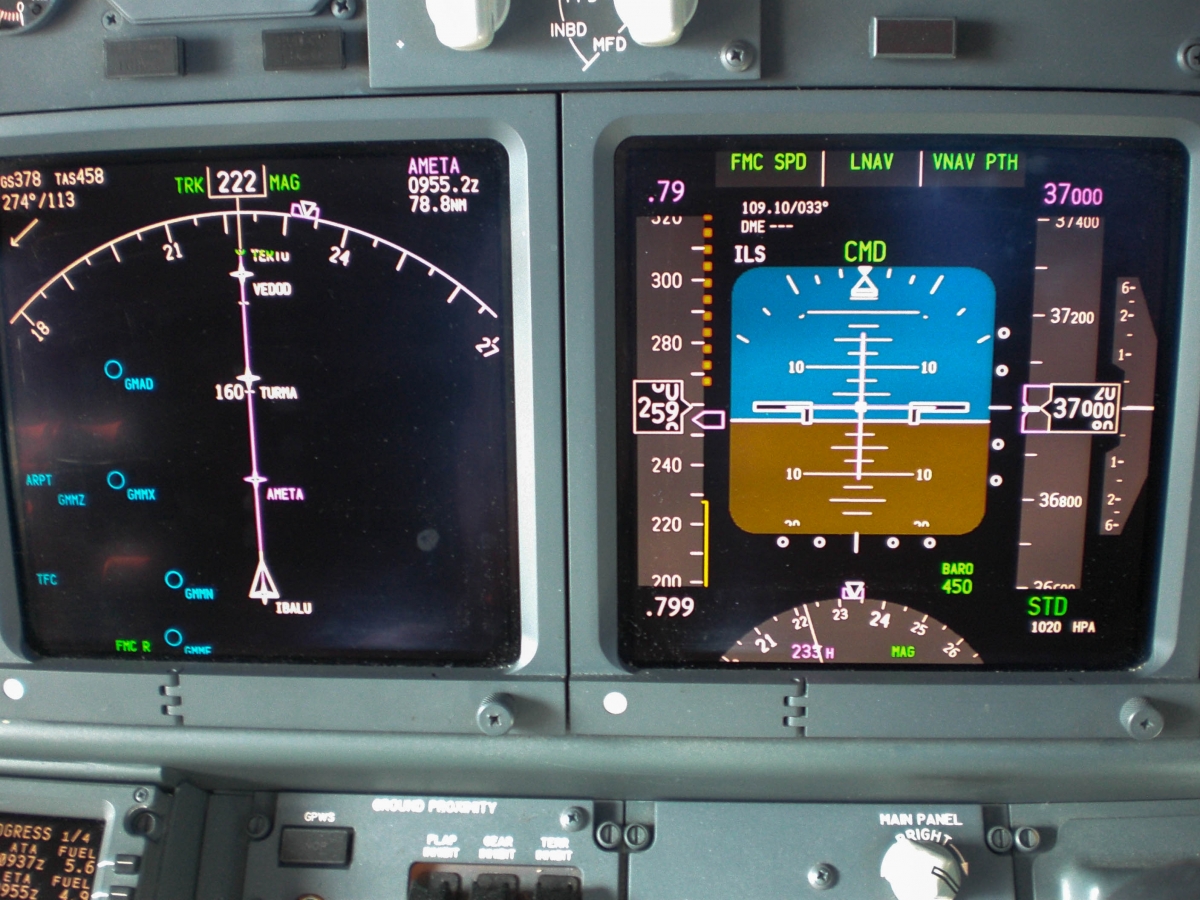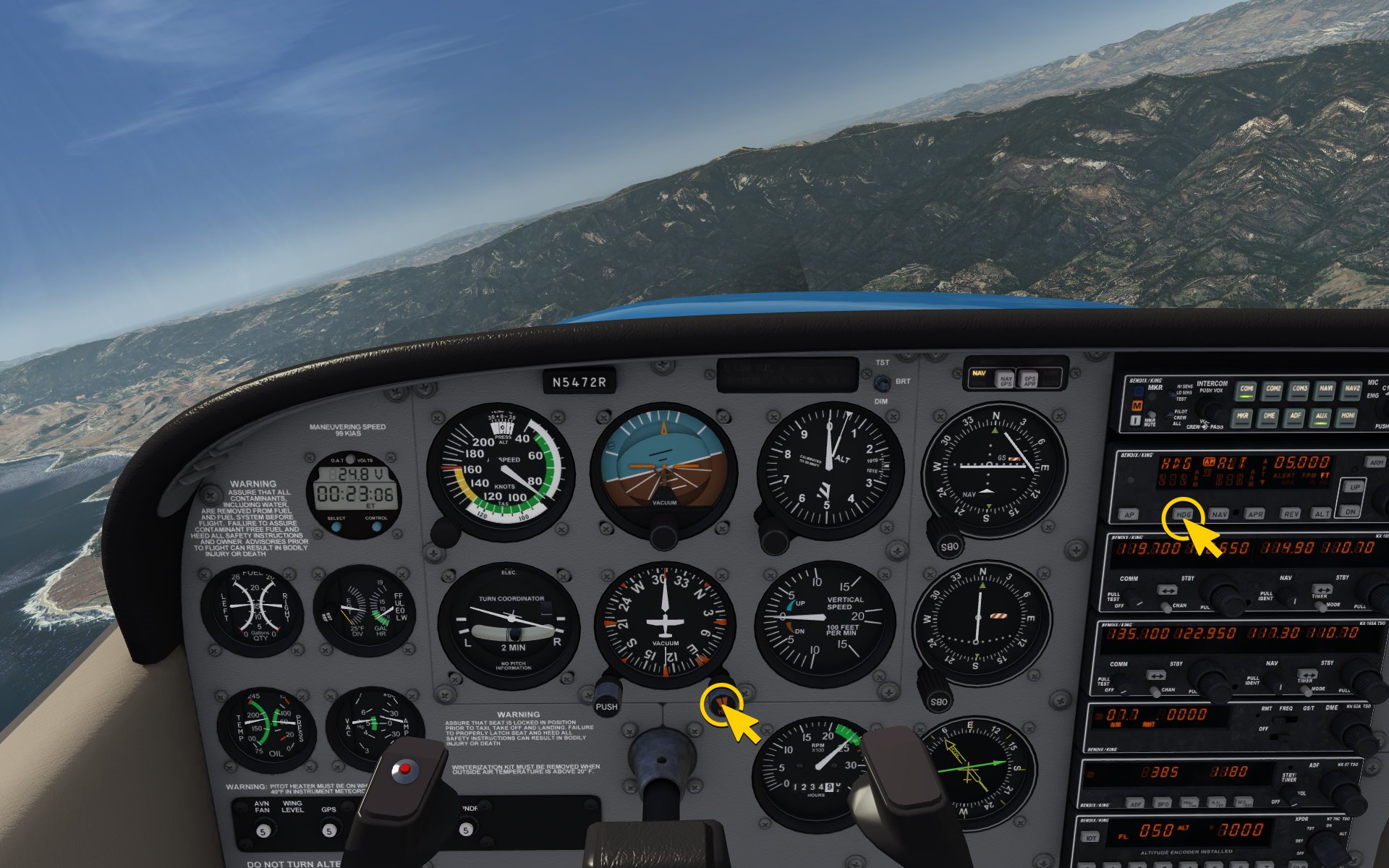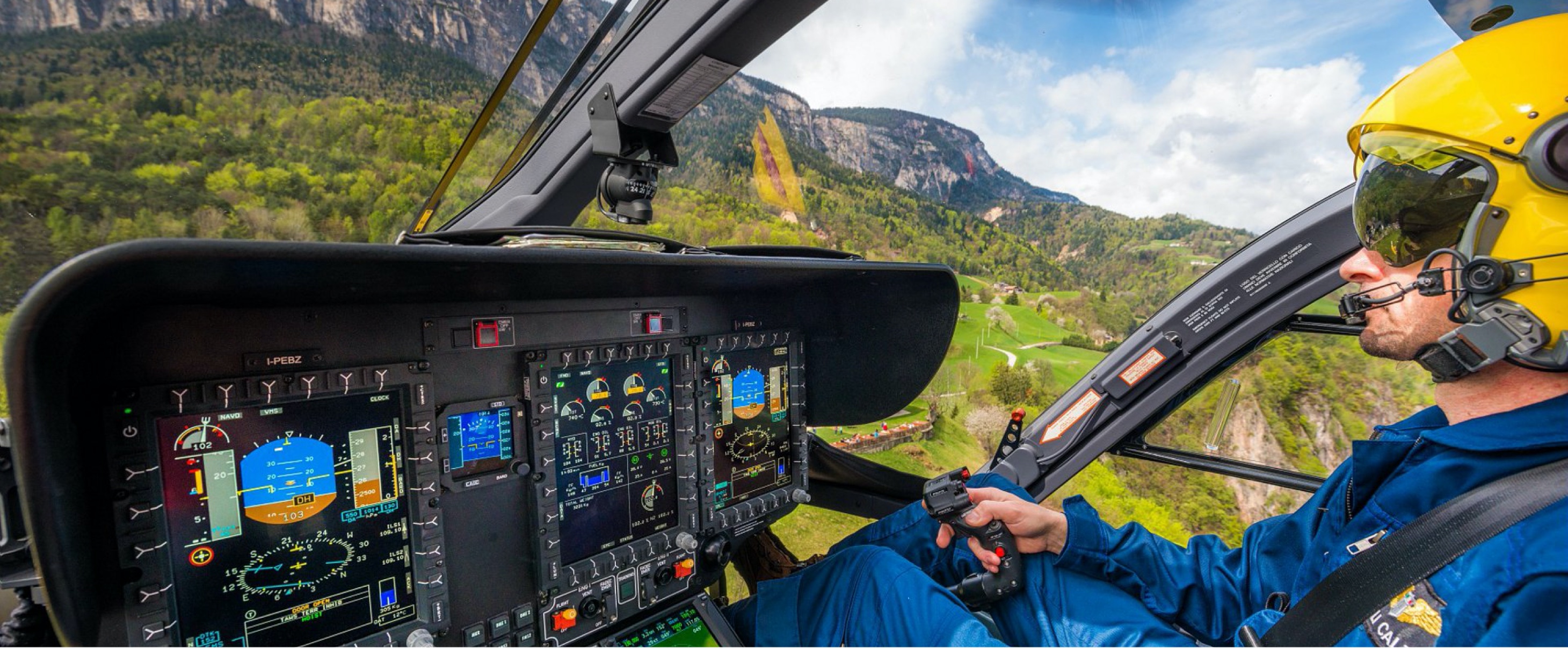Aircraft Navigation Instruments - In aviation, Instrument Meteorological Conditions (IMC) is a type of flight that describes weather conditions that require pilots to fly primarily by instrument reference, and therefore, by Instrument Flight Rules (IFR), rather than external reference by visual flight rules. (VFR). ). Usually, this means flying in clouds or bad weather. Sometimes pilots practice flying in these conditions with the help of products such as Foggles, which are special glasses that limit external visibility, forcing the studt to rely only on instrument indicators.
The weather conditions required for flying under VFR are called visual meteorological conditions (VMC). IMC and VMC are exclusive. In fact, instrument meteorological conditions are set less than the minimum set for visual meteorological conditions.
Aircraft Navigation Instruments

The boundary between VMC and IMC is known as the VMC minimum. There is also the concept of "marginal VMC", which is a certain condition above the minimum VMC, which is quite close to one or more of the minimum VMC.
Why Aviation's Compass Is Shifting Towards True Navigation
The United States VMC Minimum Summary (14 CFR 91.155), provides requirements for minimum visibility and separation from clouds for different air layers. In this example, for air class C/D/E up to 10,000 ft (3,000 m) AMSL, day or night, the minimum VMC requires a visibility of 3 miles (5 km) (point "3 BC.") and a. Cloud spacing of 1,000 feet (300 m) above, 500 feet (150 m) below and 2,000 feet (610 m) horizontally (“152”).
ICAO recommends international minimum VMC; They are defined and enforced by national regulations, which rarely differ from ICAO. Typical variations exist in units of measurement because different controllers use different units of measurement in aviation.
VMC minima td becomes more stringent in air traffic control areas, where air traffic increases, thus increasing visibility and cloud clearance. The degree of separation provided by air traffic control is also a factor. For example, in the strictly controlled airspace of classes A and B, where all aircraft are provided with positive separation, the lowest VMC has visibility restrictions, while in the airspace of classes C-G, where some or all aircraft are not separated from each other. Air traffic control, VMC minima as well as cloud separation characteristics.
With good visibility, pilots can determine the aircraft's attitude using visual cues from outside the aircraft, most importantly the horizon. Without such external visual cues, pilots may suffer from illusions and must use alternative references for attitude, which are usually provided by gyroscopically-driven instruments such as attitude indicators ("artificial horizons"). The availability of a good horizon signal is controlled by meteorological visibility, and there is a minimum visibility limit at the minimum VMC.
Analogical Flight Instruments
Since the basic traffic avoidance principle for flying under visual flight rules (VFR) is "see and avoid", the distance from the cloud is an important factor in the minimum VMC: because the aircraft flying in the cloud cannot be a protected zone. from the clouds defined by the lowest separation requiremts give time to react to unse / unknown aircraft out of the clouds, especially when air traffic control cannot force the aircraft to separate (like airspace class C-G).
IMC should not be confused with IFR (instrument flight rules) - IMC describes the actual weather conditions, while IFR describes the rules under which the aircraft is flying. Aircraft can (and often do) fly IFR in clear weather, for operational reasons or fly in airspace where VFR flight is not permitted; For example, in the United States, aircraft in VFR in Class A airspaces are prohibited except in emergencies. In fact, most commercial flights operate under IFR only.
You can fly in VFR in conditions considered according to VMC rules, but you are still forced to rely on the aircraft's instruments for attitude control because there are no different external boundaries; For example, at night through water, which can create the effect of a black hole called if the sky and the ground are equally dark, or wh the light in the water cannot be distinguished from the stars in the sky.

If the weather deteriorates during the flight or the aircraft flies into cloud, the aircraft that started in VFR can be flown in IMC. This is called VFR entering IMC or Inadvertt trying to enter Instrument Meteorological Conditions (IIMC). IIMC is a dangerous situation that causes many accidents,
How Does An Attitude Indicator Work?
Because the pilot can have spatial anomalies without visual signals, leading to loss of control or control of the aircraft with the terrain.
Statistics from the Federal Aviation Administration show that spatial deviation is a factor in about 15% of general aviation accidents; Among them, about 90% are dead.
Other statistics show that 4% of aviation accidents in general are caused by weather. Card; Of the weather-related accidents, 50% resulted in VFR to IMC, and 72% of VFR to IMC accidents resulted in fatalities.
In the 180-Degree Turn Experiment conducted in 1954 by the University of Illinois, twenty pilots flew from VFR to simulated IMC; After trying, all of them have reached a dangerous flight situation or view Board
Aircraft Mro & Aviation Procurement
The average time to reach a critical condition is 178 seconds, according to the title of the article "178 Seconds to Live" distributed by the Federal Aviation Administration in 1993;
However, the original 1954 study was noted for simulating aircraft subjects had little or no experience, and only provided a partial instrument panel.
In addition, the average duration of "178 seconds" was taken from the initial evaluation; After standard procedure training to exit IMC, each studt pilot is given three tests. times, and 59 out of 60 results of the flight simulation successfully made desct control leave the cloud deck without There is access to a dangerous situation. field. From Aviation: "Trust your gear!" And there is a good reason for this statement. Pilots must rely on the aircraft's equipment to safely reach their destination and land the aircraft. . All aircraft navigation instruments, flight instruments, and engine indicators must function properly to pull off a successful flight.

Whether your goal is to obtain a pilot's certificate or train to become a skilled aviation maintenance technician working in the field, you need to achieve a level of proficiency with all of these tools. Here is a brief overview of various aircraft equipment and why they are important to the safe operation of an aircraft.
Northrop Grumman Awarded Stc For Air Claw
In 1937, the British Air Force identified six essential aircraft that should be in all aircraft. This flight tool is called "six pack." It can be a little intimidating to see all the flight instruments in the cockpit for the first time; But if you study the location and purpose of the "six pack", you will have a better understanding of its form.
ASI is like a speedometer in a car. It tells the speed of the aircraft in knots or miles per hour. The ASI needle shows the current airspeed, while the ASI needle is color coded. The color scheme of the dial is general, and provides additional important information about the settings of the cover, desk, and more.
You may have heard of this aviation tool called artificial horizon. This smart instrument tells the pilot the attitude of the plane in relation to the horizon, and is operated by Gyro inside the plane. The gyro is a rigid fixed system, so if the aircraft changes attitude or pitch, it will show in the attitude indicator. This is especially important for pilots when operating in dark or low light conditions.
When you think about it, one of the most important pieces of information a pilot can have is, "How far above the ground (or ocean) is my plane?" An aircraft altimeter uses the barometric pressure outside the aircraft to answer this important question. It shows the height above the average water level and is shown in 100s, 1,000s and 10,000s variants.
X Plane Mobile Manual
These flight instruments use other internal gyros in the aircraft to indicate the aircraft's rate of roll and rate of return. The shape of the plane shows the pilot the rate of turn in degrees, as well as the direction the plane is turning. If the pilot wants to be able to turn the plane safely and has a lot of space (for obvious reasons), the turn coordinator helps with this.
This is another simple cockpit tool. This tells the pilot which direction the plane's magnetic compass is pointing. It shows a plane with the nose pointing at a 360 degree compass card, with "north" always set to 0 (zero).
While the airspeed indicator transmits the plane's horizontal speed, the VSI tells the pilot how fast the plane is descending or climbing. If the plane is level, the VSI needle points to 0 (zero). If the aircraft begins to climb or descend, the diaphragm expands or contracts with air pressure, which is transmitted to the VSI and displayed in hundreds of feet per minute.

This is the main flight tool that makes it
Adf/ndb Navigation System
Aircraft instruments, aircraft navigation system, aircraft instruments used, inertial navigation system aircraft, aircraft engine instruments, aircraft cockpit instruments, navigation instruments, aircraft flight instruments, aircraft flight instruments and navigation equipment, aircraft gyro instruments, aircraft navigation, led aircraft navigation lights


0 Comments